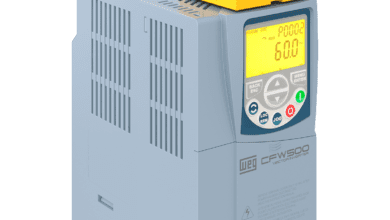It’s not uncommon for there to be confusion when telling lobe pumps and circumferential piston pumps apart. Chad Wunderlich, Distributor Development Manager at Viking Pump, looks at the differences and outlines the advantages of circumferential piston pump technology.
A circumferential piston pump (CPP) is a type of positive displacement pump that uses rotating pistons to move fluid through the pump housing. This technology has many benefits and makes circumferential piston pumps an ideal solution for hygienic applications. Unlike other types of positive displacement pumps, such as rotary lobe pumps, circumferential piston pumps can handle a wide range of viscosities and deliver high discharge pressures. Additionally, the pump’s design includes various seal types, such as mechanical seals and O-ring seals, to prevent leakage and subsequent pump damage. With its ability to handle high pressures, viscosity products, and hygienic applications, the circumferential piston pump is widely used in industries such as food processing, where maintaining product integrity and preventing contamination is crucial.
Comparing designs
It’s not surprising that circumferential piston pumps are often confused with rotary lobe pumps. With the front cover on, both pumps look very similar, with a rotor case in the front and a gearbox with timing gears in the back.
Both are rotary positive displacement pumps with non-contacting rotors. Both are commonly used for food and beverage applications where the pumps require frequent cleaning or need to meet third-party sanitary standards.
So why is a CPP not a lobe pump? What’s so different?
The difference is in the pumping elements, called rotors.
It’s in the rotors
In a lobe pump, the clearances between rotors and the rotor case wall are very close. In a circumferential piston pump, the rotors run in close clearance to the rotor case wall and to hubs in the rotor case or front cover.
But what advantages does a circumferential piston pump bring, and what pump applications would such a pump be favoured for?
Advantages and applications
First, many circumferential piston pump models, like Viking Pump’s TRA 10 series, for example, are designed to be easily disassembled for cleaning. Applications like meat processing and other facilities commonly require this type of cleaning to facilitate thorough sanitation and ease of inspection. Circumferential piston pumps are easier to disassemble and reassemble than lobe pump designs.
Secondly, CPPs have higher pressure capabilities than their lobe counterparts. Viking Pump offers models with differential pressures up to 500 PSI. Higher pressures are often needed for high-viscosity liquids (like corn syrup) or when pushing liquids through downstream filters.
Lastly, the large carrying cavities and scoop-shaped wings on each rotor help make CPPs better for handling large solids like those found in salsa, fruit preserves, or cookie dough, just to name a few.
So yes, there are more similarities than differences between lobe and circumferential piston pumps, but those differences mean you should not overlook the circumferential piston pump as a positive displacement solution and understand where to apply each design.






